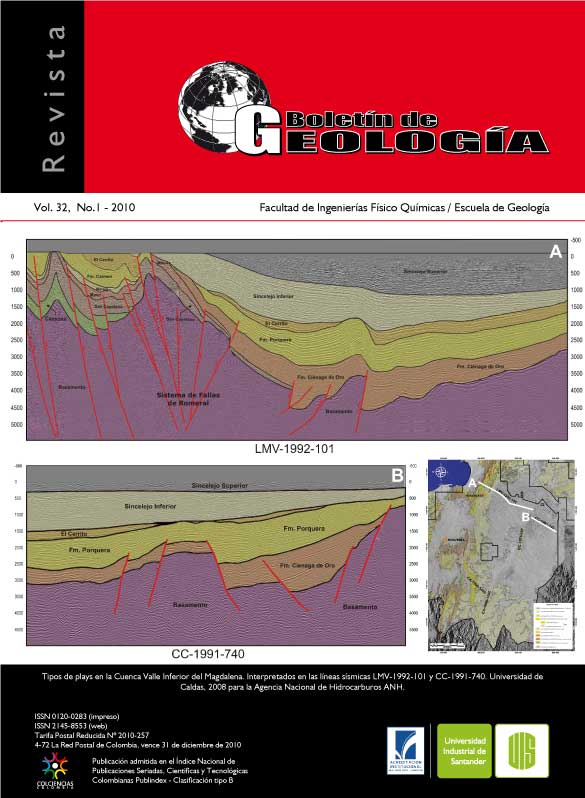Cómo citar
Resumen
RESUMEN
La Formación Mugrosa en el Campo Llanito es un importante reservorio de edad Terciaria. Estudios y análisis de corazones y afloramientos en esta Formación identifican tres facies principales: flood plains, channels sands y crevasse splay.
La mayoría de pozos del campo cuentan con registros SP y GR. Estos registros son tomados especialmente sobre la Formación Mugrosa. Con el fin de identificar el comportamiento de estas facies en el subsuelo, la metodología empleada en este trabajo se basa en definir facies apoyados en registros de pozo (electrofacies).
En el área se definieron 5 transectas con 37 pozos en total. Realizando correlaciones estratigráficas aplicando estratigrafía de secuencias, se identificaron 7 ciclos estratigráficos, limitando zonas de mayor y menor relación A/S. Además se crearon mapas de facies para de definir su continuidad y variación lateral. Determinando que la dirección que mantiene el rio que dio origen a estos sedimentos muestra un patrón NE-SW. También se definió la geometría y comportamiento de los channels sands (principales reservorios). Definiendo zonas con mayor presencia de cuerpos arenosos hacia el SE del campo. Hacia el norte del campo estos cuerpos arenosos pierden espesor y continuidad. También es posible observar que al subir estratigráficamente, estos cuerpos arenosos presentan mayor continuidad y espesor hacia la parte E y W del área piloto.
Palabras Clave: Formación Mugrosa, Facies, Electrofacies, Correlaciones Estratigráficas.
STRATIGRAPHIC ANALYSIS OF THE MUGROSA FORMATION, IN PILOT AREA, LLANITO FIELD, MIDDLE MAGDALENA BASIN
ABSTRACT
Mugrosa Formation in the Llanito Field is an important reservoir of Tertiary age. Studies and analysis of core and outcrops identify three main facies, such as flood plains, channels sands and crevasses splay.
For many wells in the field, have two log wells are available SP and GR taken especially on the Mugrosa Formation. To identify the behavior of these facies in subsurface, the methodology used in this study is based on identifying these facies supported by well logs (electrofacies).
Later identified the area drawing five transects with 37 wells in total, making stratigraphic correlations supported sequence stratigraphy, defining 7 cycles of high resolution to delineate areas of higher and lower A / S. Also be prepared facies maps, this to define the continuity and change lateral of facies especially to delineate the geometry of channels sands (Main reservoirs) which show significant trends defining areas with a high accumulation the sands body to SE of field. More over is it can to observe that river directions that originate this sediments is NE-SW, to north of field these bodies sand (Channels sands) are losses thickness and continuity, also is possible observe that this sands bodies are more continuity and thickness when up stratigraphy in the correlations.
Keywords : Mugrosa Formation, Facies, Electrofacies, Stratigraphics Correlations.
